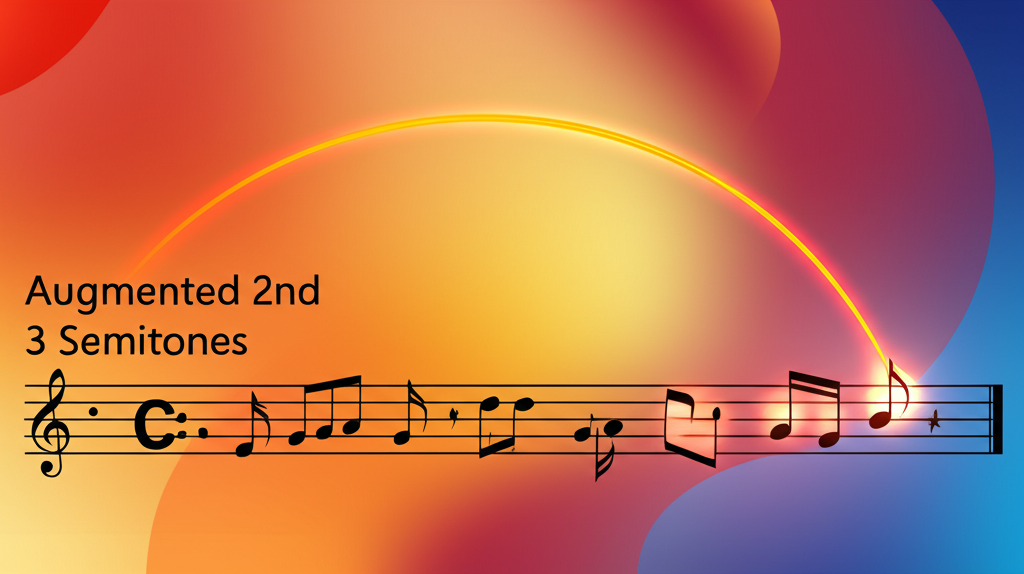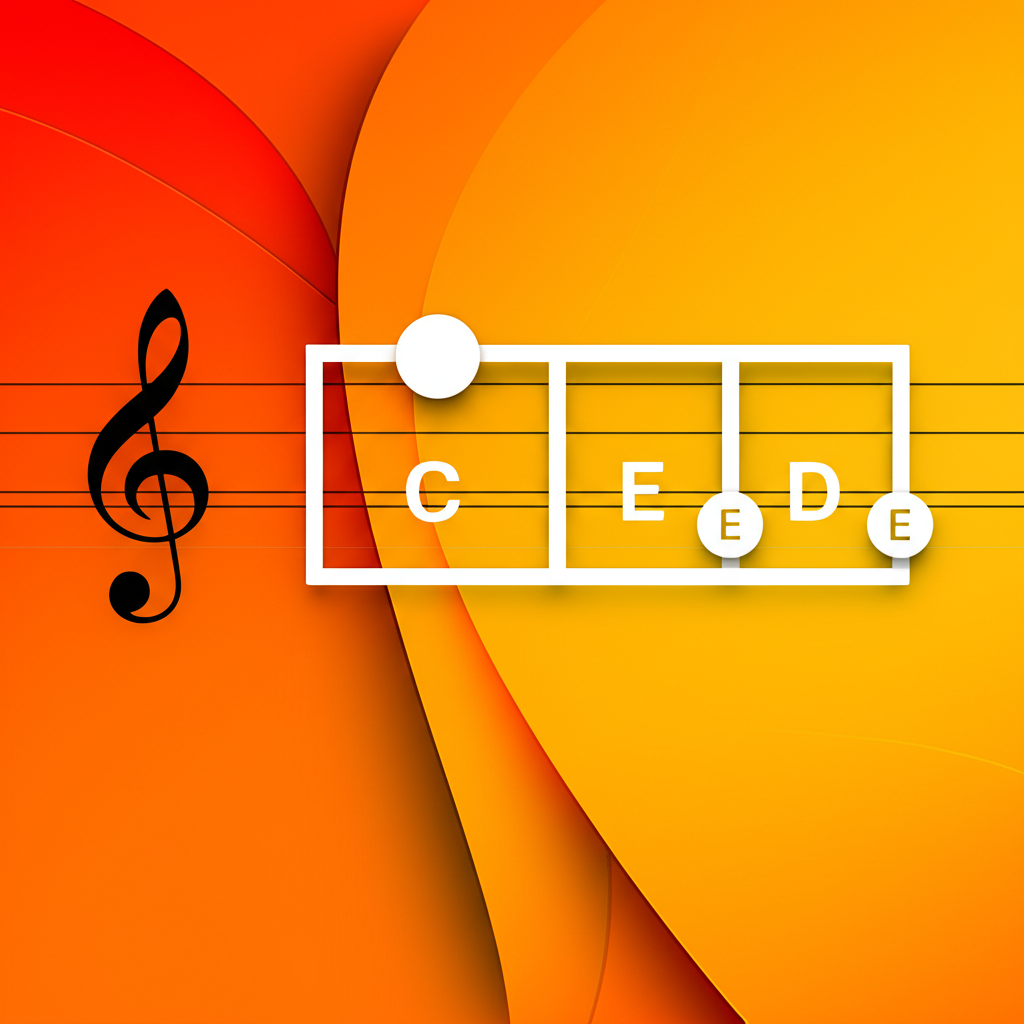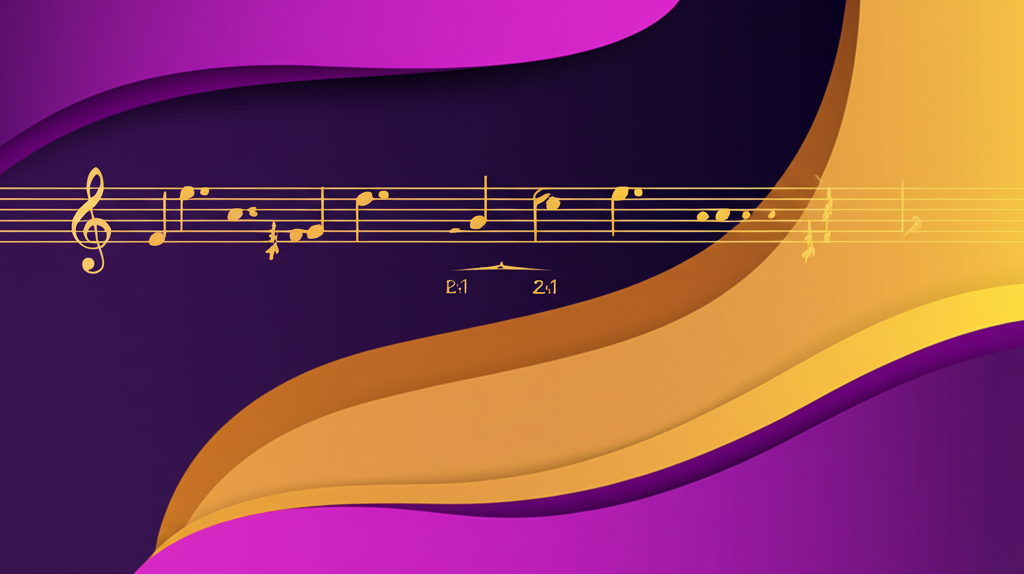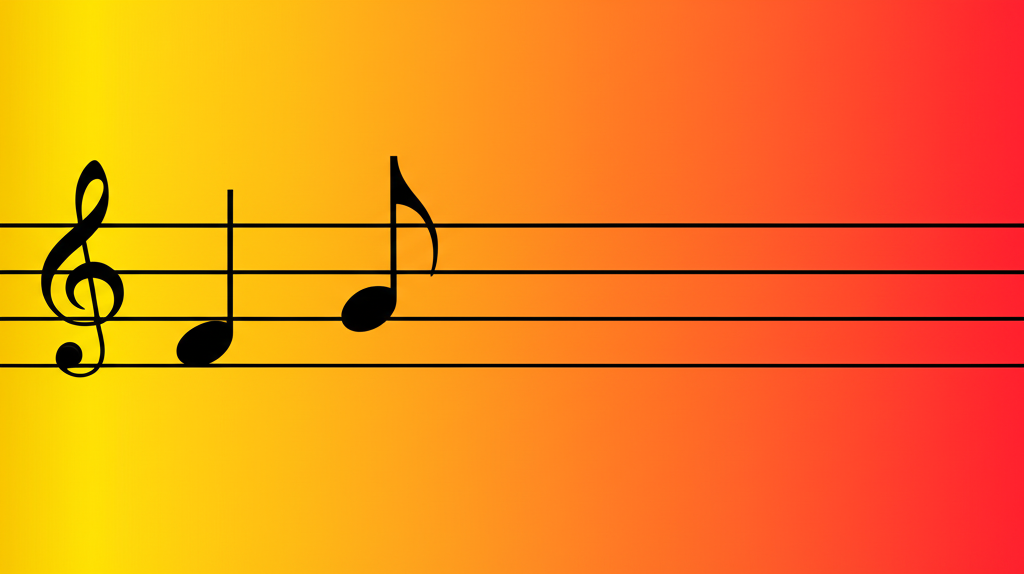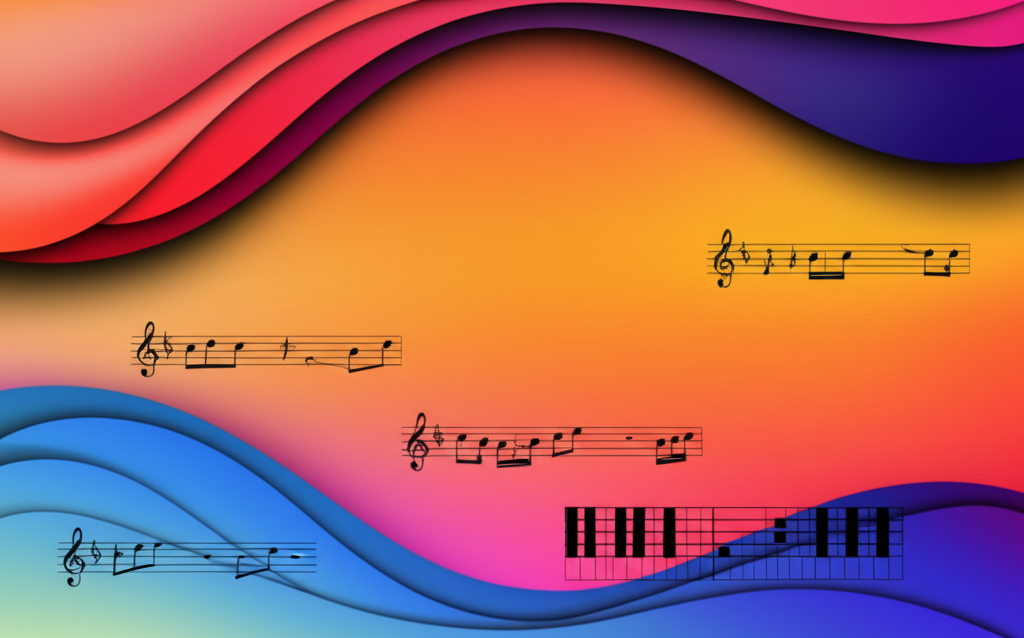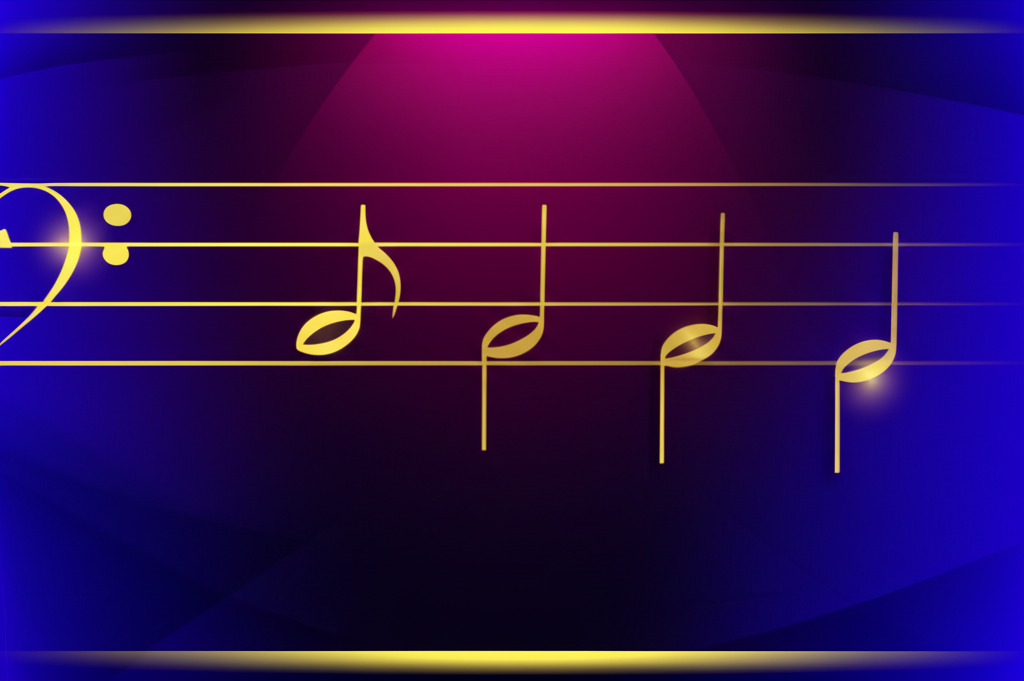
Minor Scales: Exploring the Melancholic Tones

b4n1
May 17, 2025, 4:26 p.m.
Minor Scales: Exploring the Melancholic Tones
Summary:
Minor scales are fundamental to Western music, providing tonal colors that evoke melancholy, mystery, or drama. This article explores the three main types of minor scales: natural, harmonic, and melodic, analyzing their structures, sonic characteristics, and practical applications. Understanding these scales is essential for composers and performers seeking to expand their musical vocabulary and master the expression of deeper, more complex emotions.
Keywords:
minor scales, natural minor, harmonic minor, melodic minor, music theory, key signatures, scales and modes, musical expression, tonality
Introduction:
Minor scales have captivated listeners and composers for centuries with their unique ability to express melancholy, introspection, and dramatic intensity. While major scales often convey brightness and joy, minor scales open up a rich palette of darker, more complex emotional colors that are essential to musical expression.
The fascination with minor scales in Western music has evolved over the centuries, giving rise to three main variants: the natural minor scale (or aeolian mode), the harmonic minor scale, and the melodic minor scale. Each has its own character and applications, offering a range of tonal colors that greatly enrich compositional and interpretative possibilities.
In this article, we will explore each type of minor scale, examining its structure, distinctive sonic qualities, and most common uses. Whether you seek to compose more expressive pieces, improvise with greater emotional depth, or simply gain a better understanding of the music you listen to, mastering the minor scales will open up new dimensions of musical expression.
The Natural Minor Scale
The natural minor scale, also known as the aeolian mode, is the most fundamental of the minor scales. It is derived from the sixth degree of the relative major scale.
Structure
The natural minor scale follows this pattern of intervals:
Whole - Half - Whole - Whole - Half - Whole - Whole
Or in terms of scale degrees: 1 - 2 - ♭3 - 4 - 5 - ♭6 - ♭7 - 8
For example, the A natural minor scale contains the notes:
A - B - C - D - E - F - G - A
Sonic Characteristics
The natural minor scale has an inherently melancholic and contemplative character. The presence of the flat third degree (♭3) in relation to the tonic immediately establishes its "minor" quality, creating the characteristic sound we associate with sadness or introspection. The flattened sixth and seventh degrees (♭6 and ♭7) reinforce this character, distancing it further from the brightness of the major scale.
However, the natural minor scale has an important harmonic limitation: it lacks a semitone between the seventh degree and the tonic (the leading tone), which weakens the resolution to the tonic in harmonic progressions. This "problem" led to the development of the other variants of minor scales.
Applications
The natural minor scale is particularly prominent in:
- Folk music from various traditions (especially Mediterranean and Slavic)
- Modal jazz and rock music (especially when a "floating" sound is desired without a strong leading tone)
- Descending melodic passages in classical music
- Many styles of rock and metal
The Harmonic Minor Scale
The harmonic minor scale emerged as a solution to the "problem" of the natural minor scale: the lack of a leading tone that strongly resolves to the tonic.
Structure
The harmonic minor scale modifies the natural minor scale by raising the seventh degree. Its pattern of intervals is:
Whole - Half - Whole - Whole - Half - Augmented second - Half
Or in terms of scale degrees: 1 - 2 - ♭3 - 4 - 5 - ♭6 - 7 - 8
For example, the A harmonic minor scale contains the notes:
A - B - C - D - E - F - G♯ - A
Sonic Characteristics
The most distinctive sound of the harmonic minor scale comes from the augmented second interval (or whole and a half step) between its sixth and seventh degrees. This unusually wide interval creates an "exotic" flavor reminiscent of Middle Eastern or Eastern European sonorities.
The presence of the raised seventh degree (the leading tone) also provides a strong tendency to resolve to the tonic, creating harmonic tension and directing musical movement more definitively than the natural minor scale.
Applications
The harmonic minor scale is especially important in:
- European classical music, where it provides the basis for functional dominant chords in minor keys
- Flamenco and other Mediterranean musical traditions
- Neoclassical metal and shred, where the augmented second interval is used for virtuosic solos
- Klezmer music and other Eastern European traditions
The dominant seventh chord in a minor key (e.g., E7 in the key of A minor) derives its notes from the harmonic minor scale, not the natural minor.
The Melodic Minor Scale
The melodic minor scale represents a compromise between the melodic and harmonic needs of tonal music. Traditionally, this scale has a distinct ascending form compared to its descending form.
Structure
In its traditional ascending form, the melodic minor scale modifies the natural minor by raising both the sixth and seventh degrees:
Whole - Half - Whole - Whole - Whole - Whole - Half
Or in terms of scale degrees: 1 - 2 - ♭3 - 4 - 5 - 6 - 7 - 8
When descending, the natural minor scale is traditionally used.
For example, the A melodic minor scale contains the notes:
Ascending: A - B - C - D - E - F♯ - G♯ - A
Descending: A - G - F - E - D - C - B - A
Sonic Characteristics
The ascending melodic minor scale creates an interesting hybrid between the minor and major. It retains the characteristic flat third degree (♭3) that establishes its minor quality, but the raised sixth and seventh degrees eliminate the "modal flavor" of the natural minor scale, creating smoother melodic lines that resolve gently to the tonic.
In modern jazz and other contemporary contexts, the ascending form of the melodic minor scale (sometimes called "jazz minor scale") is used both ascending and descending.
Applications
The melodic minor scale is particularly important in:
- Classical music, especially for ascending melodic lines in minor passages
- Modern jazz, where it forms the basis of many sophisticated harmonic constructions
- Guitar solos in progressive rock and fusion
- Contemporary composition, where its derived modes offer distinctive tonal colors
In jazz, the modes of the melodic minor scale are widely used, including the lydian dominant mode (4th mode) and the altered or "super locrian" mode (7th mode).
Comparison of the Three Minor Scales
To visualize and hear the differences between the three minor scales, here is a direct comparison in A minor:
Each scale has its own distinctive character:
- Natural Minor: Melancholic, modal, without a strong tonal direction
- Harmonic Minor: Mysterious, exotic, with an oriental flavor and a strong tendency towards the tonic
- Melodic Minor: Smoother and more sophisticated, combining the minor character with a softer resolution
Harmony in Minor Keys
The different minor scales generate different diatonic chords, especially in the V and VII degrees:
Natural Minor
The main chords in A natural minor would be:
- I - Am (A minor)
- III - C (C major)
- IV - Dm (D minor)
- V - Em (E minor) - Note: no major dominant
- VI - F (F major)
- VII - G (G major)
Harmonic Minor
The main chords in A harmonic minor would be:
- I - Am (A minor)
- III - C+ (C augmented) - due to the G#
- IV - Dm (D minor)
- V - E (E major) - now we have a major dominant with G#
- VI - F (F major)
- VII - G#dim (G# diminished)
Melodic Minor
The main chords in A melodic minor would be:
- I - Am (A minor)
- II - Bm (B minor)
- III - C+ (C augmented)
- IV - D (D major) - due to the F#
- V - E (E major)
- VI - F#dim (F# diminished)
- VII - G#m7b5 (G# half-diminished seventh)
In practice, composers often mix elements from all three minor scales to create richer, more expressive harmonic progressions.
Practical Examples
Example 1: Progression in A Natural Minor
Notación musical:
Example 2: Progression in A Harmonic Minor
Notación musical:
Example 3: Progression in A Melodic Minor
Notación musical:
Applications in Different Musical Genres
Classical Music
Classical music traditionally uses the three minor scales fluently, often following certain conventions:
- A minor harmonic for harmonic passages, especially cadences
- A minor melodic for ascending melodic lines
- A minor natural for descending melodic lines
Works like Rachmaninoff's Piano Concerto No. 2 or Beethoven's "Pathétique" Sonata show masterful use of minor tonalities.
Jazz
Modern jazz has particularly embraced the melodic minor scale (often simply called "jazz minor"). Its seven modes provide a wealth of colors for improvisation:
- The first mode (melodic minor) for m(maj7) chords
- The fourth mode (lydian dominant) for dominant (7) chords
- The seventh mode (altered) for altered dominants (7alt) chords
Standards like "Autumn Leaves" or "Blue Bossa" often feature progressions that navigate through these minor scales.
Rock and Metal
Many rock and metal genres exploit the emotional depth of minor scales:
- Natural minor for a melancholic or epic feel
- Harmonic minor for a dramatic, "exotic" sound
- Melodic minor for sophisticated, jazzy solos
Songs like "Stairway to Heaven" (Led Zeppelin) or "Sultans of Swing" (Dire Straits) feature these scales prominently.
Folk and World Music
Various folk and world music traditions use minor scales to evoke specific cultural or emotional atmospheres:
- Natural minor in Celtic and Slavic folk music
- Harmonic minor in Middle Eastern and Indian music
- Melodic minor in jazz-influenced world music fusions
Pieces like "Scarborough Fair" or "Misirlou" beautifully illustrate these applications.
Conclusion
Mastering the three types of minor scales is essential for any musician seeking to deepen their expressive capabilities and enhance their compositional toolkit. Each minor scale offers unique sonic characteristics and emotional resonances, opening up a wide array of possibilities for musical expression.
The natural minor scale provides a fundamental, melancholic sound; the harmonic minor scale adds an exotic, dramatic flair; and the melodic minor scale offers a sophisticated, smooth pathway between minor and major tonalities.
By understanding and utilizing these scales, musicians can more effectively convey complex emotions, create tension and resolution, and enrich their musical narratives. Whether in classical compositions, jazz improvisations, or modern fusion genres, the minor scales are invaluable tools for artistic expression.
We encourage musicians to explore these scales deeply, experiment with their unique characteristics, and incorporate them into their musical language. The world of minor scales is a vast and expressive realm, waiting to be discovered and mastered.








